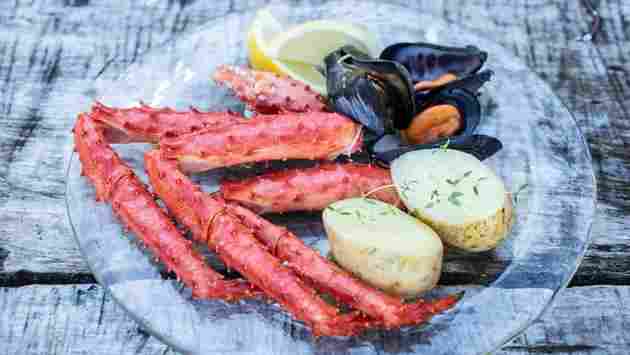WHY IT RATES: In addition to Argentina's diverse landscapes and population, the country also offers a variety of delicious culinary options. —Codie Liermann, Senior Editor

Argentina is best known around the world for the quality of its beef, its legendary asados as well as its robust Malbec wines. Visitors to Argentina are also known to develop an obsession with alfajores (sandwich cookies filled with dulce de leche), medialunas (Argentina’s version of a croissant), dulce de leche, helado (Argentine gelato introduced by Italian immigrants) and empanadas. Getting used to drinking mate (a local infusion), however, may be more of an acquired taste. But Argentina offers far more in terms of culinary delights than just the classics. And many of the country’s different regions have their own specialties. Different provinces also have their own version of empanadas. Following is a gastronomic tour through some of Argentina’s different regions:
Buenos Aires – Argentina’s vibrant and cosmopolitan capital is home to an endless array of culinary options from fine dining to traditional bodegones, historic cafes, carritos along the riverfront for street food classics and a growing food truck scene serving creative fare. Buenos Aires also offers a wide variety of cuisines from around the world inspired by the numerous waves of immigrants that have been shaping Argentine identity since the late 19th century, from Italian and Spanish to Lebanese and Armenian, Korean and Japanese to Peruvian and Venezuelan. Young chefs are creating updated versions of Jewish immigrant cuisine, and there are numerous options for vegans and vegetarians as well.
Visitors to Buenos Aires will find that beyond the classic grilled meat and empanadas, the most popular foods favored by Porteños (inhabitants of the port as residents of Buenos Aires are called) are Argentine adaptations of Italian classics such as pizza – a national obsession! – fresh pasta dishes and veal and chicken cutlets alla Milanese.
Atlantic Coast – Mar del Plata, about 250 miles south of Buenos Aires on the Atlantic coast, is a popular resort town and the heart of Argentina’s fishing industry. In addition to all of the Argentine classics, visitors to Mar del Plata and popular neighboring beach resort towns can savor a wide variety of fish and seafood dishes. Calamari, octopus, shrimp, scallops, mussels, seafood stews and sea bream are some of the must-tries here. Many Argentines also believe that the best medialunas in the country are found in Mar del Plata and some of the top brands of alfajores also originated here.
Northwest – Argentina’s northwest (Salta and Jujuy are the most commonly visited provinces) is a land of stunning landscapes and rich indigenous history. The Qhapaq ñan, the ancient Inca road network, passed through this region. Indigenous and criollo (creole) heritage have left traces on the cuisine, music, dance and handicrafts of the region and the unique flavors of its cuisine set it apart from the rest of the country. Empanadas are king here and every province has its own variety. Some of the other foods to try include locro and carbonada (hearty stews with squash, corn and a variety of meats and sausages), as well as tamales and humitas served in corn husks (humitas are filled with corn paste and cheese). More adventurous eaters can also try exotic meats like llama and ñandú. This region also produces some full-bodied high-altitude red wines as well as fresh and aromatic Torrontés, Argentina’s signature white wine.
Patagonia – The rich bounty of Patagonia’s lakes, rivers and forests as well as the cultural influences of the different immigrant groups that settled here, mostly from Alpine countries (Swiss, Austrians, Germans and Northern Italians), have influenced this region’s cuisine. Lamb reigns supreme in Patagonia, and game meats including wild boar and venison are also popular. The local catch includes trout and freshwater salmon that can all be washed down with locally brewed craft beers. Smoked food items are also a local specialty. For a taste of local indigenous cooking traditions, try curanto, a centuries-old cooking technique where meat, fish, shellfish and vegetables are cooked over hot stones deep underground. Patagonia is also well known for its wild berries and rosehip jams. And San Carlos de Bariloche is a chocolate lovers paradise with artisanal chocolate shops dotted throughout town.
Farther south, in Tierra del Fuego, the frigid waters of the South Atlantic and the Beagle Channel provide a bounty of Southern king crab, prawns and large mussels.
Additional information on Argentina is available at argentina.travel .
SOURCE: Visit Argentina press release.

Leave a Reply